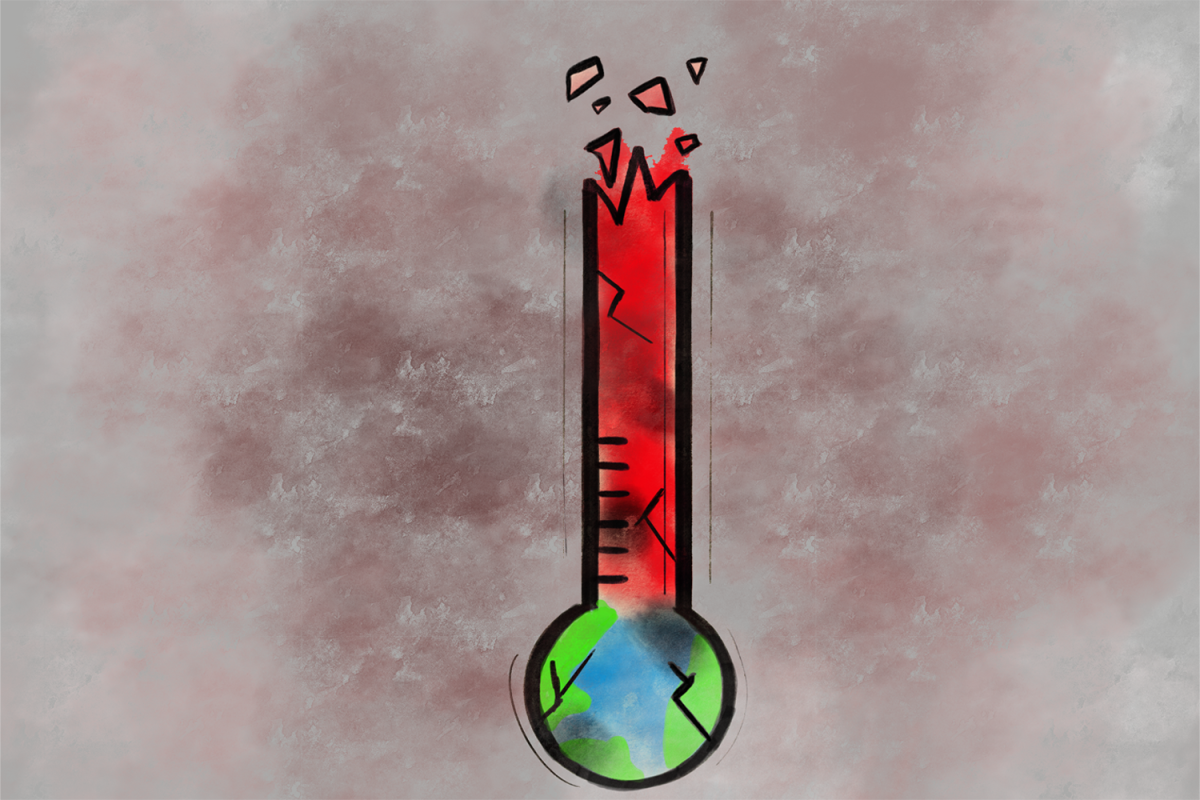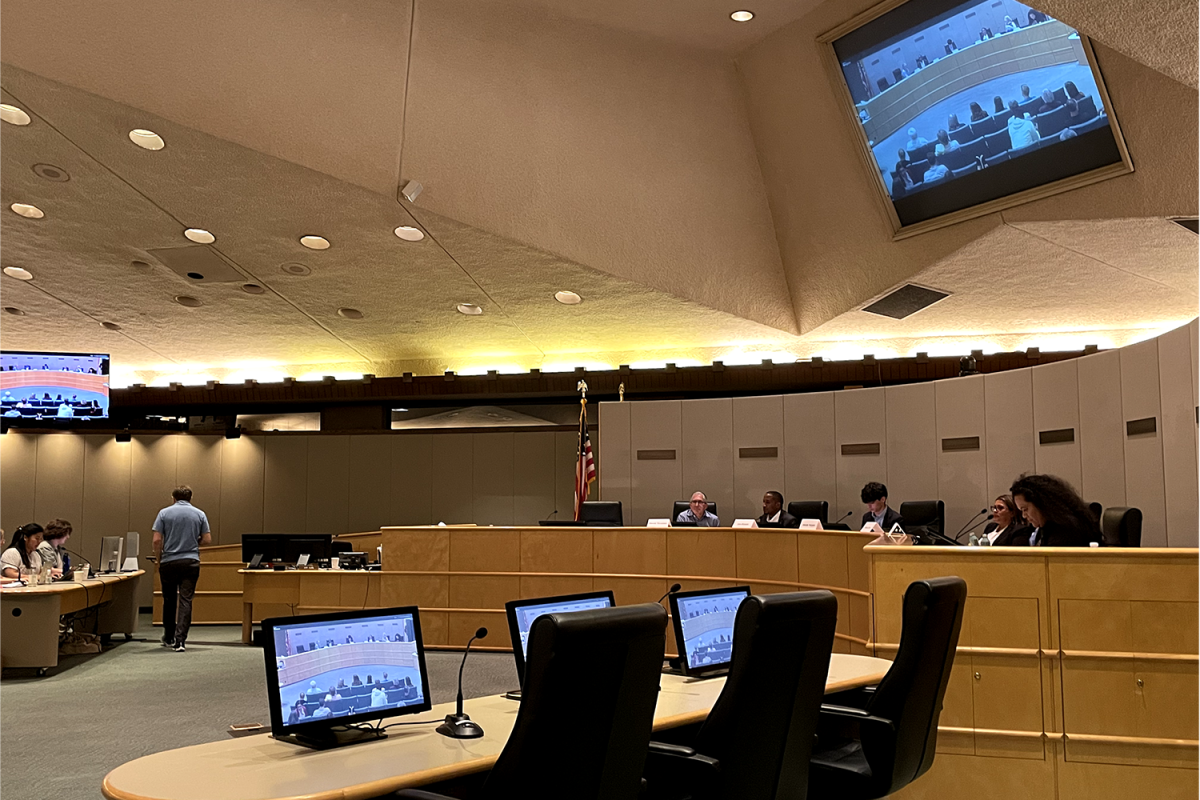8 billion people.
The total number of people living on this planet. To think that just 12 years ago, the population made it to 7 billion.
According to the United Nations, the world population reached 8 billion on Nov. 15, 2022. But this new number brings forth an onslaught of challenges that people must face.
Climate change, food insecurity, and sustainability have all become terms that people are familiar with. But these are just a few of the numerous challenges that humans already face. The Earth has its limits, but the population will continue to grow and create implications for those problems. Despite the possible effects of the population reaching this new number, this is still a significant accomplishment.
“Considering the breakthroughs made in science and health, it’s incredibly impressive that the world population is reaching 8 billion,” said sophomore Tina Sum.
Tracy Benning, a professor at the University of San Francisco’s Department of Environmental Science, echoes this.
“I remember we made a big deal about getting to 7 billion. So it’s pretty amazing that we have already reached 8 billion,” Benning said.
Nadia Diamond-Smith is an associate professor from the Epidemiology and Biostatistics department at the University of California, San Francisco’s Institute for Global Health Sciences. She believes that the population reaching 8 billion is a marker of increasing pressure on the Earth. Due to how we have managed things, many regions still face several challenges.
“We haven’t done a great job of being equitable in our distribution of resources around the world, and there are still regions with extreme poverty, hunger, and poor health outcomes. And unfortunately, that’s often where there’s a lot of population growth,” Diamond-Smith said.
Furthermore, the regions facing more population growth will have to endure even more problems.
“Most of the population growth is unfortunately in the Sahel parts of Africa, where there’s also likely to be extreme impacts of climate change,” Diamond-Smith said.
Climate change can create many issues and affect food security and water scarcity. But one of the most significant ways climate change can impact human health is through heat and rising temperatures.
“We’ve seen some key waves, even in developed countries, that have had big impacts on mortality. So I think there’s a lot of concern about what will happen if we continue to see that, especially in regions where people have access to nothing that helps protect them,” Diamond-Smith said.
Diamond-Smith mentioned that food security connects to nearly everything, and the shifting climate can impact agriculture. Even more, according to Benning, we have almost farmed all of the arable lands on this planet.
“So, there is no place that we can expand in terms of growing more food,” Benning said.
This is troublesome because as the population grows, there will be more and more mouths to feed. However, according to Benning, people have come up with some innovative solutions. She said that some companies are growing produce in warehouses and that people have also brought up the idea of vertical farming, where people grow crops on skyscrapers.
Another possible solution Benning mentioned is population growth control.
“Many countries have been very successful in bringing down their growth rates, like China. They’ve been very successful at controlling population growth. But, there are cultural aspects that make it a touchy subject,” Benning said.
Controlling population growth can include contraception, family planning, education, and helping other countries achieve a higher standard of living. Adding on, Diamond-Smith explained that gender inequality also affects population growth.
“Something we found in many global surveys is that women often want fewer children than their husbands, but they don’t have the autonomy and empowerment to use family planning,” Diamond-Smith said.
However, supporting women’s education in these areas can help counter this. Benning explained that the birth rate tends to decrease when women receive more education.
“It helps people see what’s possible in terms of working outside of the home. And for the most part, the United States helps pay for a lot of those programs, to help with things like education, and that includes providing information on family planning and contraceptive use,” Benning said.
Similarly, Diamond-Smith believes that alleviating poverty feeds into people wanting fewer children.
“Historically, we’ve seen that as countries and people become richer and have more opportunities, they tend to also want fewer children,” Diamond-Smith said.
Receiving higher levels of education can increase the number of opportunities people have and help them escape poverty. Unfortunately, the funding from the U.S. government for those programs can be inconsistent, as it depends on what administration is in power.
“When the Republicans were in power with President Trump, they cut off all funding for our international programs that provided family planning and contraceptives to places like countries in Africa or Southeast Asia. With the Biden administration, they came into power, so now we’re funding those programs again,” Benning said.
When considering raising the standard of living for impoverished people and helping underdeveloped countries, it is also essential to keep the possible environmental effects in mind.
“There’s a lot of people trying to figure out ways that we can have a higher standard of living, and that can be distributed to bring people out of poverty,” Diamond-Smith said.
Regarding this issue, Benning used the United States as a historical comparison. Saying we need to find new ways of developing, growing, and helping other countries achieve a higher standard of living in a manner different from what we did in the U.S., which grew through the Industrial Revolution and the use of fossil fuels.
“We have to be more sustainable in terms of our building practices, farming practices, and everything else,” Benning said.
Diamond-Smith agreed with Benning on the issue of finding more eco-friendly ways to help developing countries.
“Hopefully, there will be more technological advances that allow us to have a better standard of living and have less of an impact on the environment,” Diamond-Smith said.
Overall, many problems need fixing in our world, and the growing population may cause these issues to be even more complicated than they are now. The fact that the population is growing means there are fewer resources available, and the places with higher population growth tend to be the places that need more help.
The time we have to take action isn’t endless. Benning believes that we are past the time we need to take action. There are models that make predictions for what the world population will be in 2100. The lower estimates are around 7 billion, the middle estimates are about 9.6 billion, and the higher estimates are approximately 17 billion.
“If you think about it, it’s only another billion and a half people before we reach the middle estimate, and this was regarding 2100. We need to see our population growth rate go down to have any chance of avoiding catastrophe. And I think the only way that that’s going to happen is if people make a conscious effort to reduce population growth,” Benning said.











